Fastening for pipes - types, characteristics and use
Laying sewage, plumbing and heating with plastic, polypropylene or metal-plastic pipes requires the use of special tools. Thanks to them, it is possible to avoid sagging structures under the action of temperature, to make the line neat and level. In this article we consider the most frequently used fasteners for pipes to the wall and other options.
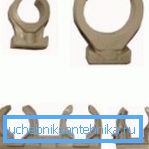
Introduction
You will not surprise anyone today with materials that have become an alternative to metal for laying pipeline networks, namely:
- polypropylene;
- plastic;
- metal plastic.
Using them in the apartment, you get designs that can last without repair for more than half a century. It remains to solve only one question - how and what to attach them to the wall, so that the pipelines in the house look nice and neat, and also do not sag because of the temperature of the working fluid.
Existing constructions
For these purposes, there are not too many devices, of which the most popular are the clips of various configurations and clamps.
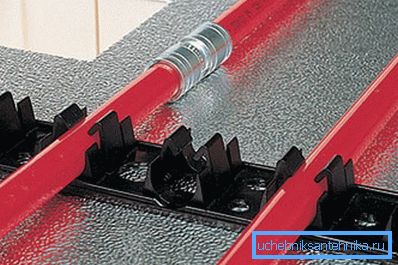
It will also be told about fasteners, which is used to connect metal shaped tubes. For example, with their help it is possible to quickly build various light frame structures.
For polypropylene
The material is corrosion resistant and endures strong chemical reagents. It will not be destroyed even when water freezes in it.
Attach piping of polypropylene when laying systems for cold and hot water, as well as during heating. Below we consider the method that is usually used.
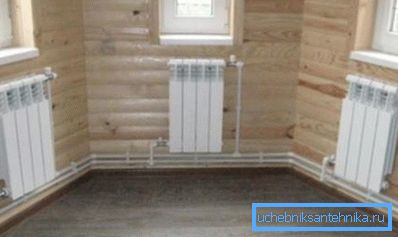
Prepare the following tools and materials for the job:
- fastening clips;
- dowel-nails;
- figure screwdriver;
- hammer;
- drill.
Below will be given the detailed instructions of the process and its nuances are told:
- Mark on the wall the route that will pass the pipeline.
- Take a drill and make a hole for the dowel-nail along the marking line.
- Attach a mounting clip to it.
- Insert a dowel-nail into the hole through it and hammer it into the wall with a hammer and a screwdriver.
Tip: the clip is a relatively fragile product, so try not to overdo it when you install it, otherwise it may deteriorate.
- Insert the polypropylene tube into the clip.
As you can see, the process is quite simple, but there is a nuance here - you need to properly maintain the distance between the fasteners. Otherwise, it will drastically affect the durability of the structure, for example, due to pipe deflections, pinch points will arise near the supports.

When calculating the distance should be considered:
- material elongation;
- its weight;
- the mass of fluid that passes through the pipe.
It is best to use a special table.
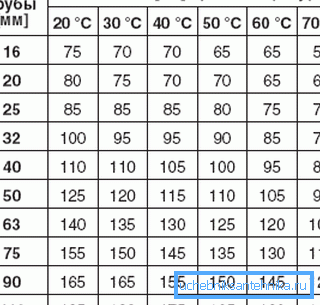
Themselves clips are made from resistant to high temperatures and mechanical damage to nylon. Thanks to this, they can reliably fix polypropylene pipes at set points, which should be inserted into them without much effort.
Removing them at any time is also not difficult. With the help of such a device you can fix the pipes not only to the walls, but also to the ceiling structures.
Hose clamps
Now we will consider the most frequent variant of fasteners for plastic sewer pipes - with the help of a clamp. Their proper installation is one of the important steps in collecting the entire sewer system. During the progress of these works, you must follow certain rules for their implementation.
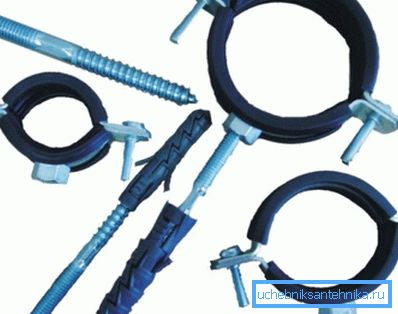
So you can continue to avoid problems during its operation and get a high-quality waste system. Therefore, the selection of appropriate fasteners can not be an idle question.
Fastening type "clamp" consists of:
| Mounting part |
|
| Clamp |
|
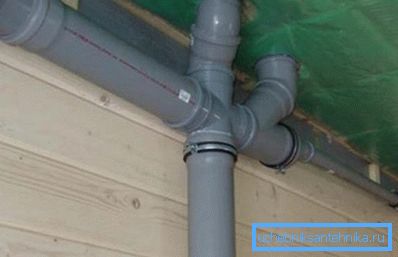
At the moment, manufacturers of polymer systems often complete their products with various tightening devices. Then there is no need for the selection of clamps.
Also appeared on the market various clamps:
- deaf;
- floating
- free.

For profile pipes
Small-sized frame structures of metal shaped tubes are widely used due to the simplicity of their assembly. In this case, a specially developed fastener for the profile pipe played a significant role.
Now you can easily create small architectural forms in the country, using bolts, clamps and corresponding wrenches.
Tip: if the structures are too complex, you may need a welding machine.
Let us consider in more detail the crab system, different species of which differ in appearance.
You can purchase it:
- X-shaped;
- T-shaped;
- L-shaped.
This is done in order to be able to more conveniently carry out the installation of a different number of profiles among themselves. For the manufacture of such clamps (brackets) use metal elements with a thickness of 1.5 mm, painted with powder composition or galvanized.
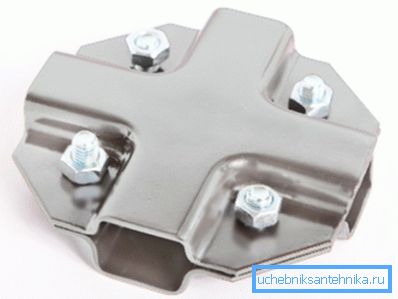
Traditionally consist of two halves, for the connection of which use bolts and nuts. After assembly, they resemble a rectangle or square in section. Their sizes of the parties give the chance to reliably clasp the profile pipe from each party.
The advantages of the crab system
- They give the opportunity for a short time to assemble and disassemble the structure, to make its transfer to another area and reassemble. Thus, your partitions, gazebos, toilets and showers in the country become mobile structures.
- Thanks to the connecting fasteners there is no need to build new structures. You can simply dismantle the building that is not required now and move it to a new site, or do something else.
- The strength of the fixture "crab" is comparable to welded joints, but in the latter case, you can not disassemble the frame structure.
- The price of the resulting buildings is relatively low, since you do not need:
- use a welding machine for work, excluding gas and electricity consumption, as well as payment for the welder;
- you can do the work yourself or bring unqualified help for it.

disadvantages
The disadvantages of this method of connection:
- only small sized pipes 40 (20) x20 can be fixed;
- docking is carried out only at an angle of 90 ?.
Conclusion
The article discussed various fasteners, which are often used when mounting shaped metal pipes, as well as conventional plastic, metal-plastic, steel and polypropylene. Its installation is possible even by unskilled workers, which significantly reduces the cost of the process.
The video in this article will help you find additional information on this topic.